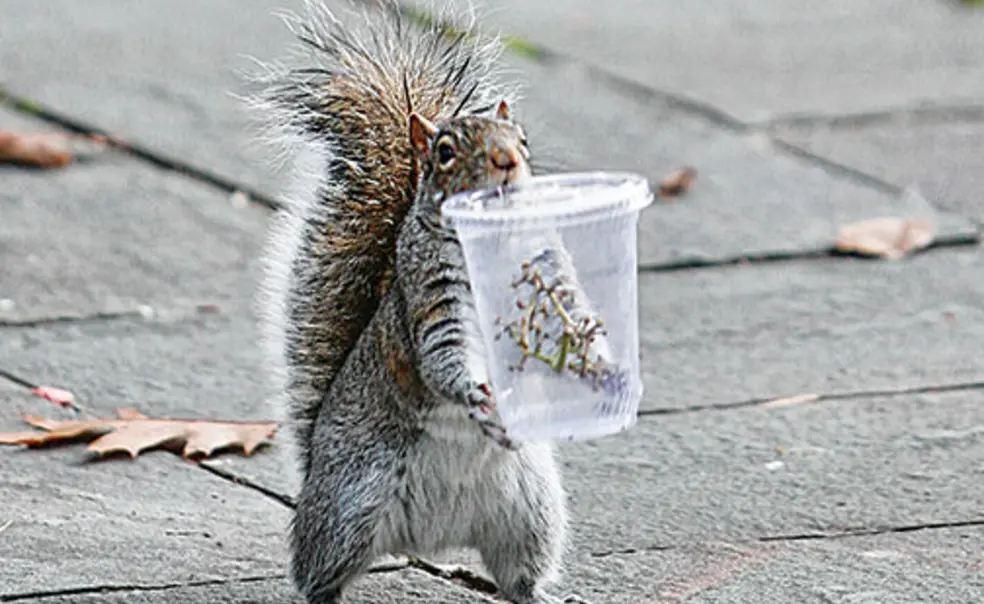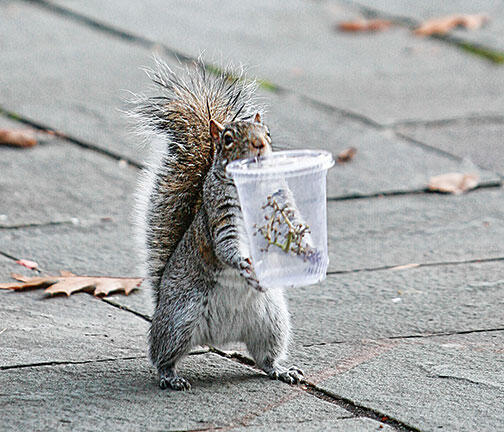Rise of the Rascally Squirrels
During the Depression, with Christmas nearing, a student in Witherspoon Hall splurged on New York theater tickets for himself and his date. As the big evening approached, he went looking for the tickets on his bureau top, only to glimpse them outside the open window in the clutches of a squirrel.
Always mischievous, squirrels were on the rise on campus. References are few before World War I, when undergrads wielded guns and dogs ran free. Only 32 were counted in a 1926 survey, mostly in trees behind Whig Hall. As late as the 1940s, some students stalked them with bow and arrow.
But by the ’50s they were common, and a resident of Edwards taught one to sip scotch on his windowsill. Counts in the 1980s showed more than 200 of the critters. In 2013 The Huffington Post put Princeton on a list of “Colleges Most Obsessed with Squirrels.”
The thief of the theater tickets was gray: Black squirrels only came in the late 1940s, melanistic variants of the kind introduced to various city parks from their native forests in Canada. Exactly how they arrived at Princeton is unknown — and the subject of numerous folktales.
Curiously enough, this campus now famous for black squirrels (about 15 or 20 percent of the total, says emeritus ecology professor Henry Horn) once was known for white ones. An occasional albino was seen downhill from Prospect House for several decades after 1910.
As for the Witherspoon incident of 1936 — the Prince account details the events but does not provide the student’s name — there was a madcap chase followed by proctors using tall ladders, who finally secured the tickets from a messy nest. The student’s date was left waiting. When he provided an explanation, the Prince reported later, she believed not a word — though she said she “appreciated its originality.”













No responses yet